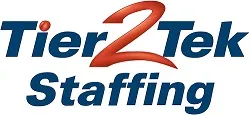Business Analyst Interview Questions with Answers

As a business analyst, bridging the gap between IT and the business using data analytics to assess processes, determine requirements, and deliver data-driven recommendations and reports to executives and stakeholders is crucial. When hiring for this role, it’s important to assess both technical skills and the ability to communicate effectively with different parts of the organization. Below are key technical interview questions designed for hiring managers and job seekers, aimed at uncovering the essential skills needed for a successful business analyst.
What is a flowchart and how do you use it in business analysis?
A flowchart is a diagram that depicts the sequence of steps in a process. It’s used in business analysis to visualize and streamline workflows, identify bottlenecks, and improve processes.
Can you explain what a use case is?
A use case describes how users interact with a system to achieve a specific goal. It helps in understanding the system’s functional requirements and in designing test cases.
Describe the role of a SWOT analysis in business analysis.
SWOT analysis is a strategic planning tool used to identify Strengths, Weaknesses, Opportunities, and Threats related to a business or project. It helps in strategic planning by translating insights into actions.
What are some of the key components of a requirement traceability matrix?
The requirement traceability matrix (RTM) links requirements throughout the validation process. Key components include requirement ID, description, source, priority, and status.
What methodologies have you used in your projects?
Business analysts commonly use methodologies like Agile, Scrum, Waterfall, and Lean. Each framework has its tools and techniques suited for different types of projects.
How do you handle changes to requirements?
Handling changes involves assessing the impact, discussing with stakeholders, updating documentation, and ensuring everyone is aligned with the new requirements.
What tools do you use for creating diagrams and why?
Common tools include Microsoft Visio, Lucidchart, and Balsamiq. These tools help in creating clear and detailed diagrams that are essential for visual communication of processes and designs.
Explain the difference between functional and non-functional requirements.
Functional requirements describe what the system should do, while non-functional requirements describe how the system performs a task, focusing on usability, reliability, and performance.
What is data modeling and why is it important?
Data modeling involves creating visual representations of a system’s data. It is crucial for understanding complex data structures and for designing databases that support business processes.
How do you prioritize project requirements?
Prioritization can be based on factors like business value, regulatory compliance, complexity, and dependencies. Techniques like MoSCoW (Must have, Should have, Could have, Won’t have) are commonly used.
What is a gap analysis?
Gap analysis is the comparison of actual performance with potential or desired performance. This analysis is often used in the strategic planning process to identify areas for improvement.
Can you explain the concept of user stories and how they are useful?
User stories are short, simple descriptions of a feature told from the perspective of the user. They are useful for capturing functional requirements and guiding Agile development.
What is scope creep and how do you manage it?
Scope creep is the uncontrolled expansion of product or project scope without adjustments to time, cost, and resources. It’s managed by setting clear project boundaries and using change control processes.
Describe a situation where you used analytical skills to solve a problem.
Analytical skills might be used to solve problems such as identifying inefficiencies in a workflow or finding solutions to reduce costs. Techniques used could include data analysis, brainstorming, and root cause analysis.
What is business process modeling and what are its benefits?
Business process modeling is the graphical representation of a company’s business processes or workflows, useful for understanding interconnections and for process improvement.
Explain the Agile methodology and its importance in business analysis.
Agile methodology involves iterative development where requirements and solutions evolve through collaboration. It’s important for business analysis as it supports adaptive planning, evolutionary development, and delivery.
What is the difference between a business analyst and a data analyst?
While both roles involve data, business analysts focus on using data to drive changes and improve processes within the business context, whereas data analysts primarily focus on collecting, processing, and performing statistical analyses on data.
How do you ensure that your documentation is clear and effective?
Effective documentation should be concise, well-structured, and easy to understand. Techniques include using clear headings, bullet points, and diagrams to enhance readability.
What is stakeholder analysis and why is it important?
Stakeholder analysis involves identifying the people impacted by a project and understanding their influence and needs. It’s crucial for ensuring stakeholder expectations are met and for project success.
Can you describe a project where you implemented a solution that saved time or money?
This might involve automating a manual process, which reduced time spent and errors, or redesigning a process to use fewer resources while maintaining output quality.
What are decision tables and how are they used in business analysis?
Decision tables are a concise visual representation for specifying which actions to perform based on different conditions. They help in complex decision-making and rules-based systems.
Explain the concept of “as-is” and “to-be” process analysis.
“As-is” refers to the current state of a business process, and “to-be” refers to the desired future state. Analysis involves comparing the two to identify necessary changes and improvements.
How do you deal with difficult stakeholders?
Dealing with difficult stakeholders involves clear communication, empathy, and sometimes negotiation to align their needs and expectations with project goals.
What are some common challenges you face in business analysis and how do you overcome them?
Common challenges include unclear requirements, scope creep, and resistance to change. Overcoming these involves thorough communication, robust documentation, and change management strategies.
What metrics do you use to measure the success of your projects?
Metrics might include project delivery times, budget adherence, stakeholder satisfaction, and the achievement of project objectives.
What is the importance of communication skills in business analysis?
Communication skills are vital to articulate ideas, negotiate requirements, and ensure understanding between stakeholders and the project team.
Can you explain the difference between Agile and Waterfall methodologies?
Agile is iterative, allowing for incremental and flexible responses to changes. Waterfall is linear and sequential, suited for projects with clear, unchanging requirements.
What is a business case and how do you prepare one?
A business case provides justification for a project or task. It includes analysis of business problem, proposed solution, cost and benefit analysis, and risk assessment.
How do you ensure stakeholder buy-in for a project?
Ensuring buy-in involves early and frequent engagement, presenting clear benefits, and addressing concerns proactively to align their support with the project’s goals.
Describe an example of how you have used data analytics in your role as a business analyst.
Using data analytics might involve analyzing customer data to improve product offerings or using performance data to optimize business operations.
How do you stay updated with the latest industry trends and technologies?
Staying updated can involve attending industry conferences, participating in professional workshops, reading industry publications, and being part of professional networks.
Technologies Commonly Used by Business Analysts

Business Analysts utilize a variety of technologies to enhance their analysis, communication, and project management capabilities. Some of the most common technologies include:
- Data Visualization and BI Tools: Tools like Tableau, Microsoft Power BI, and Qlik Sense are used for creating dashboards and visualizing complex data to aid in decision-making.
- Requirements Management Tools: Applications such as JIRA, Confluence, or Microsoft Azure DevOps help in tracking requirements, managing tasks, and collaborating with development teams.
- Database Management Systems (DBMS): Technologies like SQL Server, Oracle, or MySQL are essential for managing extensive data and performing complex queries.
- Process Modeling Tools: Business analysts often use tools like Microsoft Visio, Lucidchart, and ARIS to model processes and workflows.
- Customer Relationship Management (CRM) Software: Systems like Salesforce and Microsoft Dynamics CRM are crucial for managing customer interactions and analyzing customer data.
- Advanced Excel Skills: Proficiency in Microsoft Excel is fundamental for data manipulation, financial modeling, and creating reports.
- Statistical Analysis Software: Software like R or SAS can be used for more in-depth data analysis and forecasting.
- Agile Project Management Tools: Tools like Asana, Trello, and Scrum software support agile project management methodologies which are commonly used in projects involving business analysis.
Core Expertise in Business Analysis
Business Analysts are equipped with a diverse set of expertise to effectively bridge the gap between IT and business operations. Here are some of the key areas of expertise commonly required in the field:
- Requirements Gathering: Ability to extract and interpret the needs of stakeholders to formulate clear and actionable requirements.
- Data Analysis and Interpretation: Skilled in analyzing data sets to discern patterns, make predictions, and support business decisions.
- Process Improvement: Expertise in identifying inefficiencies in business processes and recommending improvements to enhance productivity and reduce costs.
- Project Management: Proficient in overseeing projects from inception to completion, ensuring they meet deadlines, budgets, and desired outcomes.
- Stakeholder Management: Ability to manage and communicate effectively with stakeholders at all levels to ensure project requirements and objectives are met.
- Technical Writing: Skilled in creating detailed documentation, including project requirements, process maps, and user manuals.
- Problem-Solving: Strong analytical skills to resolve complex issues and implement solutions that align with business goals.
- Software Proficiency: Familiarity with business intelligence tools, databases, and project management software to support various aspects of business analysis.
Need to Hire a Business Analyst?

If your organization is looking to hire a skilled Business Analyst, Tier2Tek Staffing is ready to connect you with top talent suited to your specific needs. Let us streamline your hiring process with our expert recruitment services.
